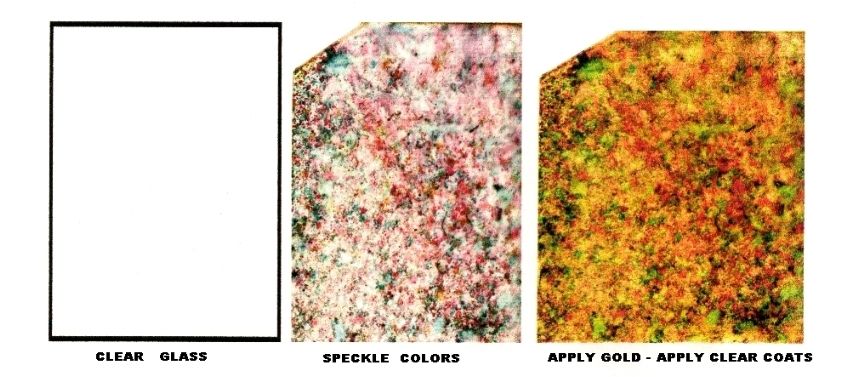Question
We have a job that involves something we're not proficient at. The project involves a china hutch with 6-lite glass doors that the customer wants finished in black with gold showing through - or burnished, if thats the right term. For our paint grade jobs we typically use ML Campbell opaque base tinted products. I'm having a problem getting a gold that looks good. Also, what techniques do you use to cut through the top black layer so that the gold shows through elegantly?
Forum Responses
(Finishing Forum)
From contributor A:
Give this a try, on a sample. Clear coat the glass, and allow to dry. Use a gold glaze - you can brush out the glaze, or dab and mottle the glaze as in faux marble. Allow it to dry, and then clear coat and allow to dry. Then apply your black coat, allow to dry, and clear coat. It's a reversed process that is very attractive, and you can add many artistic options.
1. Vinyl Sealer - sand.
2. Opaque color Gold (pigmented vinyl or lacquer)- 2 coats. Sand.
3. Opaque color Black, to cover.
4. Rub-through with low abrasive sand pad or light solvent, to desired look.

If you insist on keeping it cheap (normally customers who want gold on cabinetry do not want cheap), I would use a couple products for base coating larger faux work, Muralo and Ralph Lauren. Both are pretty decent, and can be found at Home Depot. I'd stay far away from gold paint found at your local paint store. Also, the gold paint is a fast drying latex, so I'd double coat it, and youíre done. This will give you higher build so less chance of sanding through it. Seal it also.
When sanding down the black itís important to use a very fine sandpaper or abrasive pad. This will give you the smooth flow into the gold from the black, and will give a much smoother surface to boot. That will be the difference between an artful flow between colors, and a hack with a 100 grit sanding block.
Finally, since you didn't mention the customer wanting any other type of distress, I'm guessing itís another one of those structured distressed pieces that are popular now. If that is the case, keep your rub-through narrowed lines following the lines of the piece, edges of boxes, etc. Do not make the rub-through wide unless the customer asks for it. Sand very lightly along the top of the profiles and detail. Tips should show here and there but not every tip and not every profile. I usually complete the look with some aging glaze over the gold and in the detail to give an added dimension.